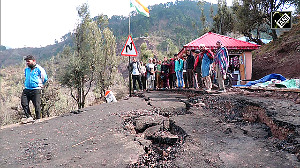 Australia should increase its immigration intake, particularly skilled migrants, by over 15 per cent from the next financial year to boost the country's economy, a prominent business lobby group said in Melbourne on Monday.
Australia should increase its immigration intake, particularly skilled migrants, by over 15 per cent from the next financial year to boost the country's economy, a prominent business lobby group said in Melbourne on Monday.
In a submission to the federal government on the size of the immigration programme to be set in the May budget, Australian Industry Group has asked the government to increase intake of immigrants from 190,000 to 220,000 in 2014-15.
"The Australian Workplace Productivity Agency has identified that Australia will need an increase of about 2.8 million people with quite specific skills over the next decade to fill some of those gaps.
“We need to find ways to fill those gaps, and obviously we can train our own, but the quickest stop gap measure is to import skills," the group's chief executive Innes Willox said.
"The proposed increase takes into account the proven benefits to the economy of a strong migration programme.
“An increase in migrant numbers supports positive growth in our population and especially in our adult workforce, which is important due to relatively low rates of natural population growth," he was quoted as saying by the ABC.
A higher skilled migration intake is appropriate at present due to Australia's historically low (albeit growing) unemployment rates; the deepening impacts of our ageing workforce (with 9 per cent of all Australian employees now aged 60 or more and 17 per cent aged 55 or over);
With early indicators suggesting a positive upturn in national housing market activity, it is expected the residential and commercial construction cycles will pick up significantly from 2014-15 which will, in turn, lead to further skilled trade shortages.
This will be exacerbated by the flow of construction workers into the mining sector and reduced trades apprenticeship numbers in recent years.
"These skills shortages and labour hire difficulties were seen clearly in recent Ai Group construction sector surveys.
During the six months to September 2013, 67.7 per cent of respondents reported either major or moderate difficulty in the recruitment of skilled labour (up from 65.7 per cent six months ago)," he said.
Willox said, in particular, the flow of skilled workers into the mining industry from construction and industrial sectors will continue as mining moves from its current investment and expansion phase into a very strong period of growth in output and exports.
"While up-skilling our current workforce remains a priority, a larger skilled migration programme will be necessary to manage the current situation and to assist in smoothing the path to future growth across the economy," Willox said.











 © 2025
© 2025